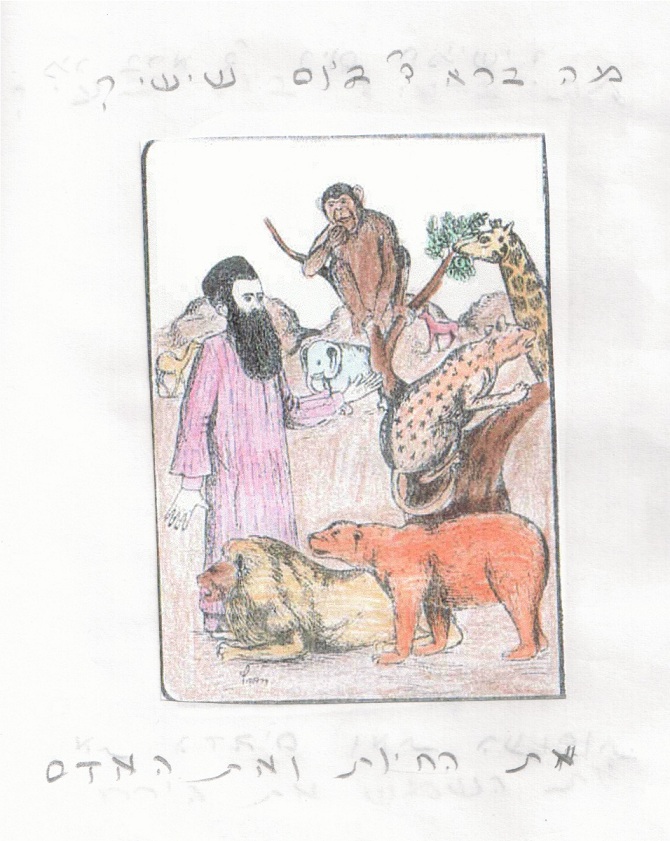This November, two individuals, both thought to have been consigned to history, unexpectedly reappeared and promptly leaped to fame. Coincidentally, both were frogs.
One was Kermit the Frog. Back in the 70s and 80s, Kermit entertained us on The Muppet Show, which in the 1970s was the most widely watched television show in the world, and he even spawned (if you’ll excuse the pun) several Muppet movies. But the television show’s ratings eventually declined, and it was ultimately cancelled. It looked like the end of the Muppets; everybody thought that Kermit had croaked. And yet one determined Muppet fan has now brought Kermit and his friends back to life in a new movie, The Muppets, which is proving surprisingly popular.
 The other frog to make a surprising comeback recently is the Israel painted frog, Discoglossus nigriventer. It was thought to be extinct since the 1950s when its native habitat of the Hula swamp valley was drained and no more frogs were to be found. Yet a single painted frog was just found in the newly re-flooded Hula nature reserve, restoring hope for the species.
The other frog to make a surprising comeback recently is the Israel painted frog, Discoglossus nigriventer. It was thought to be extinct since the 1950s when its native habitat of the Hula swamp valley was drained and no more frogs were to be found. Yet a single painted frog was just found in the newly re-flooded Hula nature reserve, restoring hope for the species.It is my hope that Kermit the Frog and the Israel painted frog have more in common than just being frogs that simultaneously and unexpectedly returned from extinction. Perhaps they both denote a societal improvement – or rather, society retreating from that which was previously and mistakenly thought to be advances and improvements.
Why did the Muppets disappear? The muppets were all about innocence; singing, dancing, gentle humor, and always ultimately transmitting messages about loyalty, love and friendship. The only “edge” to them were Statler and Waldorf, the two cynical old men in the gallery who were constantly derisive (although even their taunts were restrained).
But as audiences became more “sophisticated”, the television and movie industry changed. Adults (and even children) were no longer interested in fabric hand-puppets; they wanted animatronic robots and 3-D computer-generated wizardry. The wide-eyed innocence of singing-and-dancing muppets became less popular. Audiences became Statler and Waldorf. They wanted entertainment that was sophisticated, by which was meant racy, biting and cynical. Eventually, even children became too advanced for cheery puppets. The Muppets were replaced by The Simpsons and eventually the horrible South Park.
Why did the Israel painted frog disappear? Because its native habitat of the Hula valley was thought in the 1950s to be nothing more than a malaria-breeding “wasteland.” In the mid-twentieth century, mankind was drunk with its powers in technology and engineering, and decided to refashion such wastelands into more productive terrain. The JNF decided to transform the Hula for agricultural use, and its drainage was trumpeted as a great national achievement.
Both Kermit and the Israel painted frog disappeared as a result of mankind deciding to become more advanced. But you have to look before your leap. The “accomplishment” of draining the Hula, like other mid-20th century ideas about “improving” the natural world, turned out to be a disaster. Stripped of natural foliage, the soil blew away. Water carrying chemical fertilizers began to pollute Lake Kinneret instead of being absorbed by the swamp. And the peat in the dried-out swamp often ignited into underground fires.
Eventually, people realized that they should have more respect for God’s world. There are no “wastelands.” The natural environment has developed with exquisite balance, and while we are able and entitled to develop it further, we should do so with tremendous respect and caution. The Society for the Protection of Nature in Israel was thus formed, and the Hula was carefully re-flooded. It is now an outstanding nature reserve which serves as a stopover for millions of migrating birds each year. And maybe the Israel painted frog will now be able to make a comeback.
The return of Kermit the frog may perhaps likewise signify, and help people realize, that the more “sophisticated” forms of popular culture do not represent a positive improvement. People are starting to wonder whether advancement is always progress.
When I began teaching about the animal kingdom in Jewish thought, I was surprised and disappointed to discover people assuming that my presentations were for children. Adults had been conditioned to believe that they were too advanced for animals and zoos, which are “just for kids.” Yet when menageries were first introduced in the 19th century, they were very much seen as being for adults. Why should an adult not marvel at the wonders of the natural world? Why is it considered more sophisticated to have outgrown such things?
Or consider technology. We have more technology flooding our increasingly busy lives than ever before, but is it always an improvement to our lives? Do the drawbacks of being addicted to emails and Twitter and Facebook perhaps outweigh the advantages? Are our children enriched by being plugged in? Are we really happier by always rushing to upgrade to the latest computer or smartphone? These questions deserve serious consideration. As Britain’s Chief Rabbi Jonathan Sacks noted recently, we live in consumer society, where everyone always wants to advance their lives by accumulating more technology and possessions, but it does not necessarily help their lives be any more enriched.
On a broader scale, we have often had to learn the hard way that technological innovation can have harmful consequences. Several years back, a fascinating book was published entitled “Why Things Bite Back: Technology and the Revenge of Unintended Consequences.” It brought numerous examples of how people assumed that advances in technology would prove beneficial, and yet backfired. This is not, of course, to say that technology should always be avoided. Rather, the point is that great caution should always be exercised. Instead of just getting excited about what we could do, we should think about what we should do.
Kermit the Frog sung a famous and beautiful song, “It’s Not Easy Being Green,” about his learning not to be jealous of more spectacular creatures, and instead being happy with being a frog. Ultimately, the song was about learning to appreciate one’s lot in life. Perhaps the return of both of these frogs, Kermit and the Israel painted frog, signifies that society is internalizing that message: that not every advance is an improvement.









